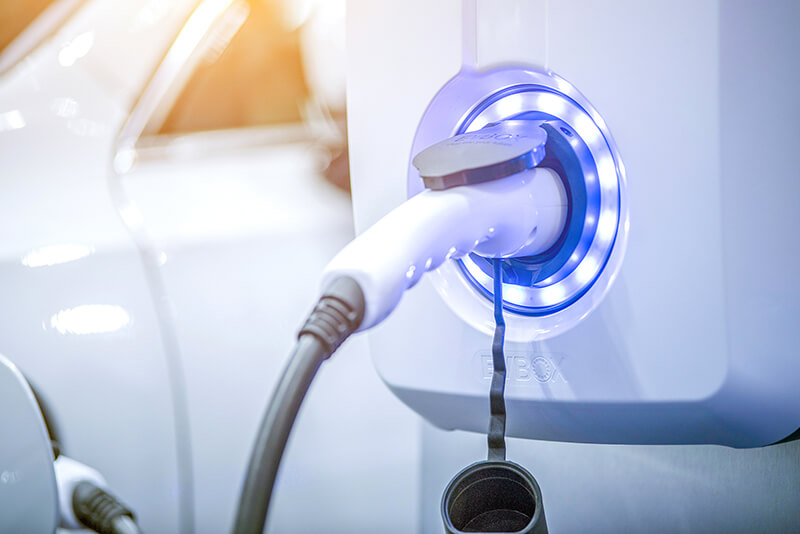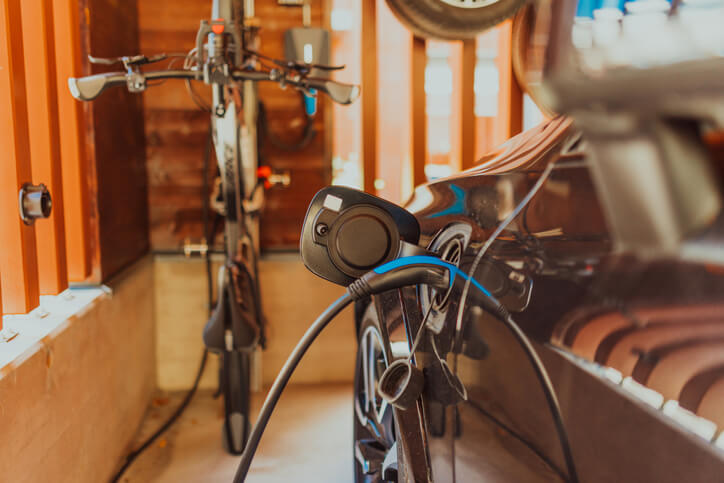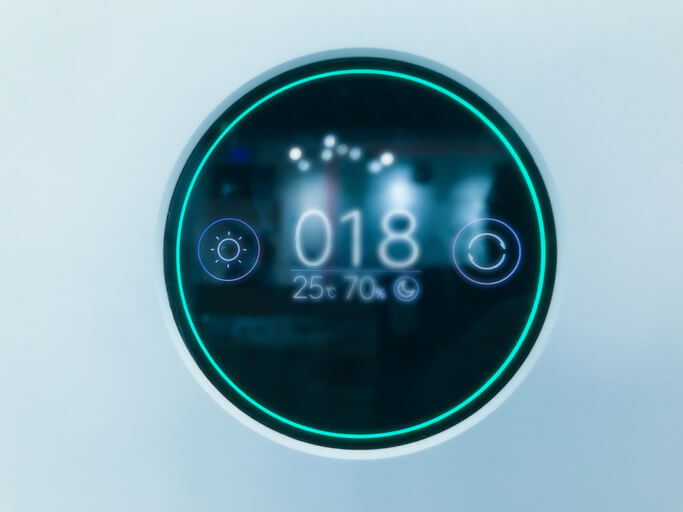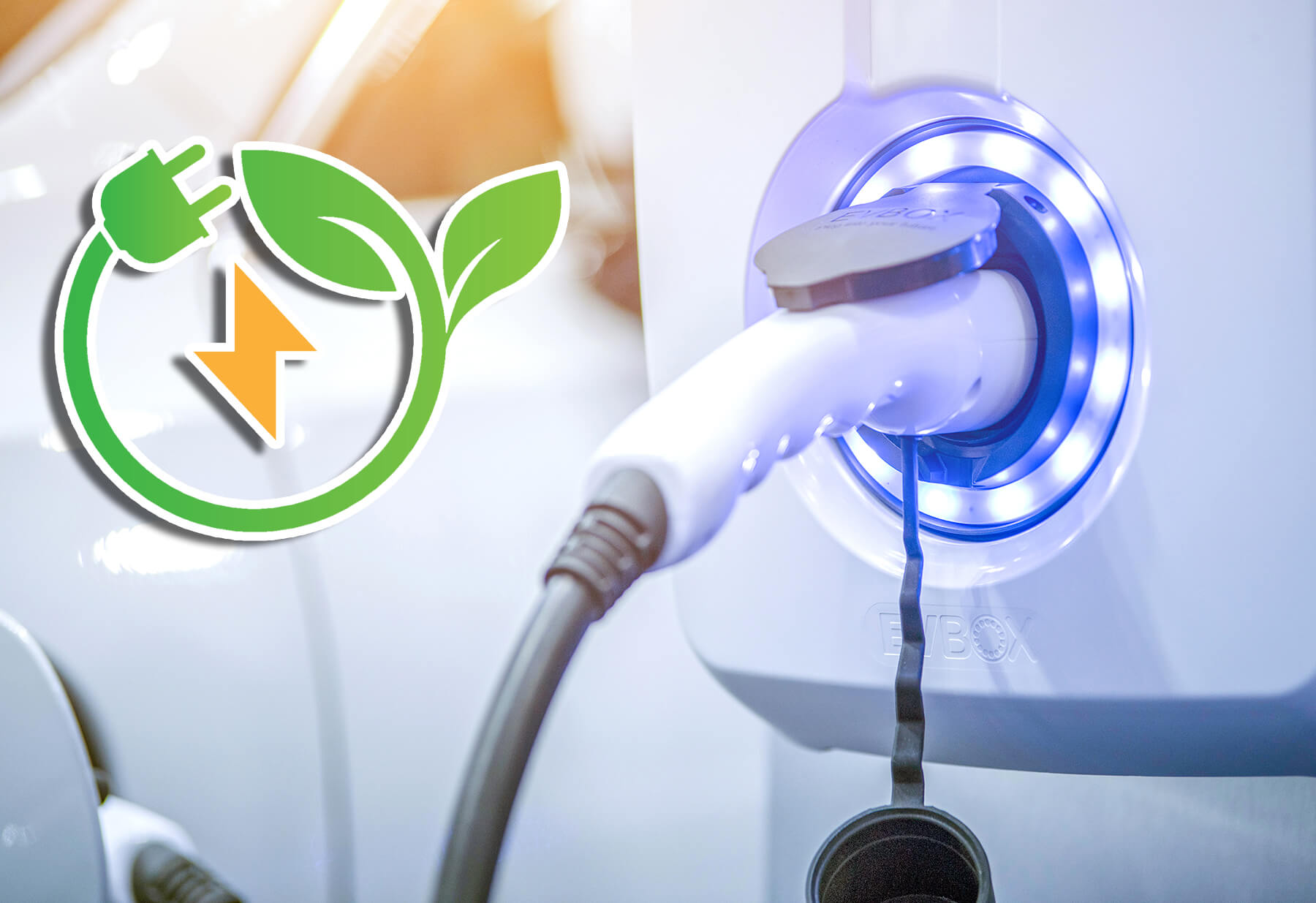Eco-friendly homes are becoming increasingly popular with homeowners for a great reason. Making the right modifications to your home makes the environment inside and outside of your house healthier.
Electric Cars & Other Sustainable Practices for Your Home
Building your home with sustainable products ensures they are free from harmful chemicals, finishes, and environmental pollutants. This can help provide cleaner air for your family to breathe. Building sustainably also gives back to the environment by lowering your carbon footprint.
Living in a greener home can also financially benefit your family. Incorporating energy efficient systems throughout your home can help decrease your water and energy bills. These investments can also prove to be fruitful when it comes time to sell your home. With an eco-friendly home, you’ll likely attract a higher property value than one that does not run as sustainably. Green homes are well sought after therefore they demand a higher selling price.
There are many different ways to turn your home into an eco-friendly space — starting with driving an electric vehicle (EV). We’ll go over those benefits, along with additional products and practices, in this article.
The Benefits of Electric Vehicles
One of the most significant benefits of owning an electric vehicle is that they require less energy to operate compared to a gas-powered vehicle. This is a great way to give back to the environment, since it helps to decrease the demand for petroleum imports. In fact, with the growing demand of EVs, the Department of Energy reports, “the United States became a net exporter of petroleum in 2020 with exports surpassing imports.” These vehicles also produce zero tailpipe emissions. That means they are far better for the environment than traditional cars.

Previously, EVs would often cost more than gas-powered cars, however in recent years we have seen them become much more affordable, often being priced similarly to their gas-powered counterparts. In addition, their prices are offset by fuel savings, state and utility incentives, and a federal tax credit. In fact, the Department of energy states that, “The federal Clean Vehicle Credit is available for EV purchases from manufacturers that have not yet met certain thresholds of vehicle sales.” That credit is worth anywhere from $3,750 to $7,500 for new purchases made by eligible individuals.
EVs also provide a far better fuel economy than conventional cars. Depending on how they’re driven, EVs can exceed 130 miles per gallon of gasoline equivalent. This decreases the need to make frequent stops to refuel. In fact, electric cars are three times more energy efficient than gas powered cars:
Install a Residential Electric Car Charger
Driving an electric car is a great way to give back to the environment. But charging stations aren’t nearly as common on the road as traditional gas stations. If you find this to be your primary hesitation in making the transition to an EV, you can easily remedy by installing a charger at home. With your own EV charging station, you’ll never have to navigate out of your way to charge, or wait in long lines. Rather, you can charge up overnight.

Gas prices are fickle,but charging your car at home means you’ll have a much more stable price that will likely be far cheaper than a tank of gas. Depending on where you live, you may even be eligible to receive a government incentive for purchasing and installing an EV charging station. For example, Illinois introduced incentives in 2022 that covered 80 percent of charging station installation costs for homeowners.
With green living becoming an increasingly popular lifestyle, EVs will become more common over the next few years. If you’re planning on selling your home in the future, potential buyers may very well be EV owners. Having a charging station at home will make your property more an even more attractive option.
Other Ways to Make Your Home More Sustainable
While driving an electric car is a great way to give back to the environment, there are many other products, practices, and building/remodeling techniques you can also implement to begin your transition to a more sustainable lifestyle.
Products to Use and Practices to Implement
There are small things you and your family can do every day to become more green. Here’s how to get started.
- Smart Thermostats
Installing a smart thermostat is a great way to immediately make an impact on your carbon footprint. They learn your home’s heating and cooling patterns,allowing the thermostat to adjust the inside temperature based on the comings and goings of individuals, and even temperatures outside.
Smart thermostats learn these patterns so that they can turn down the system when you’re gone and boot it up when you’re on your way home. This helps to reduce the energy usage and demand from fossil-fueled power plants while reducing your energy bill.

- Energy Efficient Appliances
Once it’s time to replace your washing machine, fridge, or dishwasher, consider going for an energy efficient model. Technology is advancing in this area, meaning that you’ll have plenty of options to choose from. You can double check each machine’s energy efficiency by looking at its label. Eco-friendly appliances come with labels that have a letter between A – G, A being the most energy efficient.
- Sustainable Cleaning Products
Everyone wants effective cleaning products for their homes,but some cleaners contain harsh detergents, preservatives, or toxic foaming agents that can cause pollution and other damage to our waterways. Make the effort to switch to cleaning products that contain natural ingredients and non-synthetics. You can even make your own natural cleaning products with vinegar, lemon juice and baking soda.
- Energy Efficient Lights
Homeowners now have plenty of eco-friendly light options to choose from. Energy-efficient bulbs, such as LEDs, last up to 12 times as long as traditional light bulbs — all while providing the same amount of light quality. They can even reduce your carbon emissions by up to 40 KG a year.
- Go Paperless
As a homeowner, you likely receive various bills and communications related to utilities. By default, you’ll receive a physical copy in the mail. The U.S. produces about 686 million pounds of waste from receipts every year.
You can help reduce this waste by opting to go paperless for some, or all, of your bills. You’ll start to receive them in your email inbox instead, allowing you to view the bills at your own convenience. Some organizations even offer incentives to customers who decide to make this switch.
- Evaluate Water Usage
According to the Environmental Protection Agency, the average household wastes 9,400 gallons of water per year. Similarly, household leaks collectively waste about 900 billion gallons per year. You can save water by changing some small habits, such as taking shorter showers or turning off the water when brushing your teeth. You can also consider installing low-flow shower heads or faucet aerators to help cut back on water usage. Construction and Remodeling Techniques
Are you building a new home or remodeling an existing one? Consider implementing some of the following options for a more sustainable home.
- Sustainable Windows
Typically, windows lessen your energy consumption by taking advantage of the sun as a light and heat source, however old or poorly constructed windows can actually produce the opposite effect.. As Eco Watch says, windows can leak about 25-30% of your home’s heat or air conditioning. Overall, that contributes to the $50 billion annually in energy waste in the U.S. Switching to energy efficient windows can save you up to $600 per year and 1,006 to 6,205 pounds of carbon dioxide per household per year. These are significant, measurable energy savings, plus you’ll have a home that is easier to heat and cool.
Here are some product options to think about when buying new windows:
- High-quality window frames — Windows are a large investment, so you’ll want your windows to last for years to come. If you live in a favorable climate for wooden window frames, try to purchase some from a certified green organization that offers reclaimed wood.
- Low-E glass coating — Eco Watch says that, “low-emissivity coatings control the amount of ultraviolet light and infrared light that can enter your home.” This can help to improve insulation without blocking sunlight that can be used as an additional heating source.
- Cavity Wall Insulation
In older buildings with cavity walls, you’ll typically find an inner and outer wall with a gap in between. Fill that space insulation to optimize the heating and cooling in your home. There are several options for adding this type of insulation to an older home, including spray-in and blow-in insulation. We recommend consulting with an experienced contractor who can help you weigh the pros and cons of each.
- Loft Insulation
Research suggests that up to 25% of your home’s heating energy is lost through the roof or attic. You can combat this by laying down rolls of blank loft insulation in your loft area.
- Fill the Gaps in Your Floorboards
If you live in an older home with wood floors, you’ll likely notice gaps between the floorboards. This is due to the expansion and contraction of wood over time due to the ever-changing amount of humidity in the air The older your floors are, the more prevalent this will likely become. You can fill these gaps with materials such as resin or acrylic fillers, or wood filler strips, all of which can be found in a home improvement store.
- Look for Contractors with Specific Certifications
If you’re working with a contractor to build or remodel your home, be upfront with them about your goals for your space. Let them know that creating an eco-friendly space is important to you and that you’d like your building materials to come from sustainable organizations with proper certifications. Eco Watch lists the followings as certifications to keep an eye out for:
- BREEAM
- Cradle to Cradle
- Energy Star
- Electronic Product Environmental Assessment Tool (EPEAT)
- FloorScore
- Forest Stewardship Council (FSC)
- Greenguard
- Green Seal
- Leadership in Energy and Environmental Design (LEED)
- Rainforest Alliance
- Safer Choice
- Scientific Certification Systems (SCS)
- Smart Certified
- Sustainable Forestry Initiative (SFI) Chain of Custody
- Water Sense
TL;DR — Start Your Green Journey With Beattie Development
Introducing eco-friendly practices into your home and daily life is a great way to give back to the environment. You can begin by purchasing sustainable products and implementing more green building practices in your home. If you have dreams of owning an EV or already do, one of the most effective things you can do is to install a charging station at home.
Beattie is the best choice for your EV charger installation. TESLA has designated Beattie Home Services as an approved electrician for Tesla Wall Connector recharger installations, giving you peace of mind that the job will be done right the first time, and allowing you to enjoy the comforts and convenience of charging up at home.
Our experts have been trained to install Tesla charging equipment properly. We adhere to strict quality, permitting, and inspection requirements. Our promise to you is to perform top-notch car charger installations at an honest price. Take a look at our website to learn more about our quality EV charger installation services.


